If you are looking wholesale lighting solutions, click here.
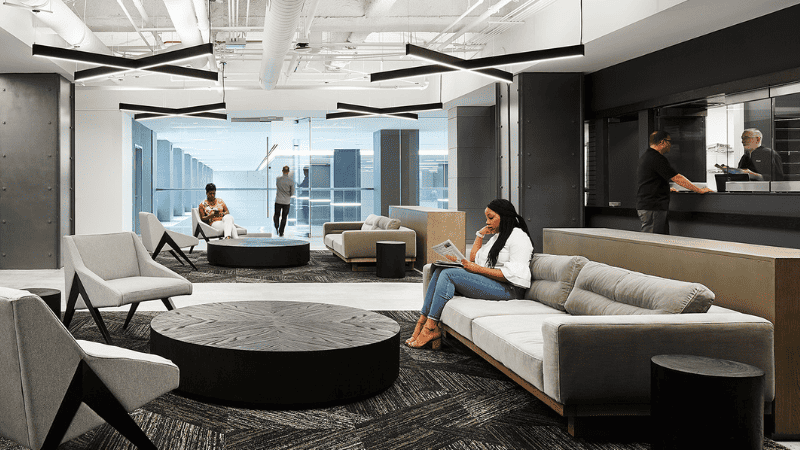
Good lighting uplifts the mood of your workplace and increases the productivity of the employees. A research report showed that 80% of the employees mentioned good lighting is important for their work environment.
Let’s see how to choose lighting for workplaces.
Office lights come in three categories; incandescent, LED, and compact fluorescent lights (CFL).
You can choose the lights based on the factors, such as their energy efficiency, lifespans, brightness, cost, and environmental impact. Let’s take a look at the three popular types of office lights.
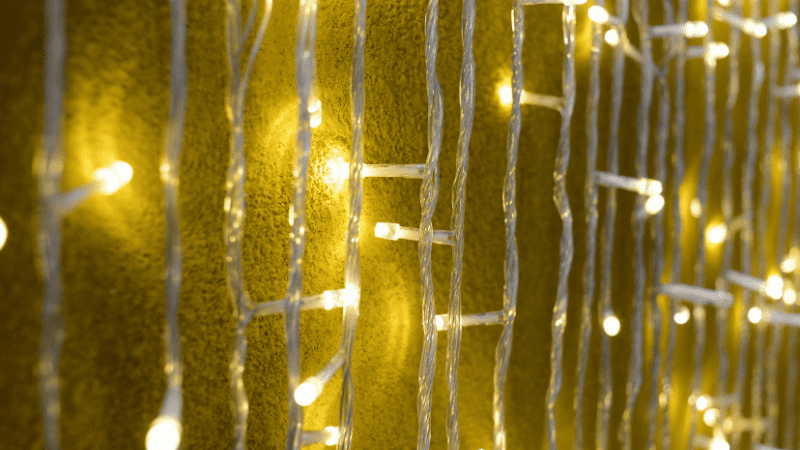
LEDs are both budget and environment-friendly. They have the longest lifespan, consume less energy, offer the highest lumen output, and burn at a cooler temperature. They come in different sizes and forms, so you can use them based on your workplace requirements.
Incandescent lights were commonly used in older offices but now they are not the most favorable option.
They consume more energy and the bulb has a shorter lifespan which means you will have to replace them frequently. These lights also produce heat, making them unsuitable for warmer temperatures.
Despite their drawbacks, incandescent lights are still a good pick for accent lighting and task-focused fixtures.
The lifespan of fluorescent lights is about 20 times greater than incandescent lights, making them a budget-friendly option.
CFLs consume less energy and offer a higher lumen output. They are easy to replace and do not produce heat. However, they contain mercury which is a hazardous metal.

Due to this, CFLs must be discarded very carefully. Mercury is not only bad for the environment but also toxic if comes in contact with the skin.
Picking the right type of office light is crucial because proper lighting reduces fatigue and increases the alertness of the employees.
This indirectly impacts your business revenue. Research shows right office lighting impacts work performance in the following ways:
Dull lights and dark environments create a gloomy scenario that is not suitable for work. A dim workplace environment triggers Seasonal Affective Disorder (SAD). SAD is a type of depression people face during winters when the Sun is not shining at its peak.
The sufferers face low energy, loss of interest, and a lack of focus. On the other hand, good lighting even relieves major depressive symptoms.
So, to create a happier and healthier work environment, make sure the lighting is just right at your workplace. This plays a part in employee satisfaction and indirectly their retention.
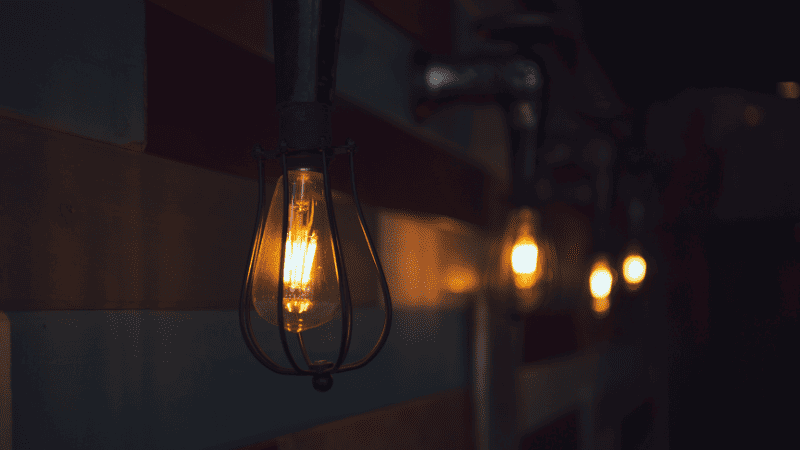
Working in improper lighting puts a strain on the eyes. Dim lights can cause stress on the eyes while too bright lights also damage them. So, having the right intensity of office lighting is crucial to optimum performance.
A study shows poor lighting at the workplace causes eye fatigue and dry eye symptoms. Therefore, to create a favorable work environment for yourself and your employees, install proper office lights.
Right office lighting increases productivity at the workplace due to the associated factors such as:
However, science shows the temperature of lights also plays a crucial role in productivity. For instance, cooler lighting improves productivity and alertness.
It decreases melatonin production which reduces fatigue. You can pick lights of varying temperatures based on the different activities at your workplace.
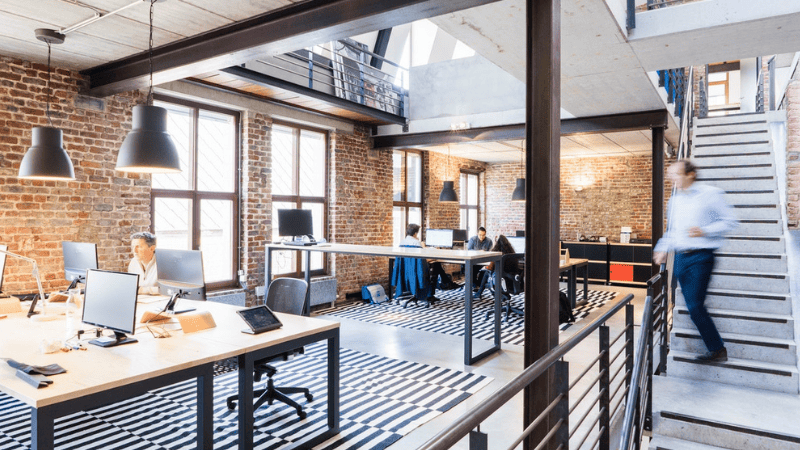
On the other hand, poor workplace lighting causes eye strain, headaches, stress, accident risks, and fatigue. So, install the lights considering various factors such as light intensity and color temperature.
LED lights have become a favorite option for office lighting due to their best performance compared to incandescent lights and CFLs. Here is why LED lights are recommended for workplaces:
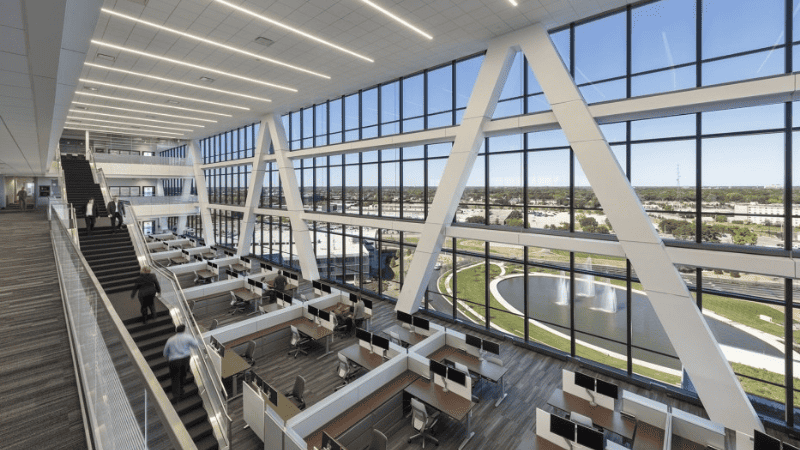
You can follow the following tips for choosing the best lighting for your workplace:
Occupational Safety and Health Administration (OSHA) has set office lighting standards at a federal level. This is to ensure employees have a comfortable working environment. These standards vary depending on the tasks performed at the workplace.
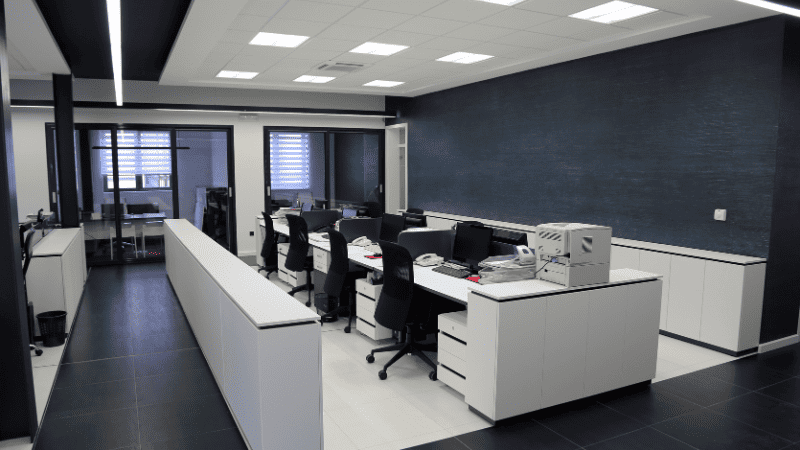
For understanding office lighting standards, you must be familiar with terms, such as lumen and lux. Lumen is the total light given off by a bulb and lux is the measurement of lumen per square meter.
According to the American National Standard Practice for Office Lighting, illumination must not exceed 500 lux in the computer-based work environment.
This means every 36 square-foot space should receive the light equivalent to that of a 35-watt incandescent bulb. If tasks require more illumination, the gap should be filled with task lighting.
Office lights are divided into two categories: task lighting and ambient lighting. Both of them are important for a properly illuminated workspace.
Getting proper ambient lighting is important for creating a comfortable work environment. It allows employees to see the surroundings clearly.
These lights should not be strong enough to cause computer screen contrast. The safest illumination level of these lights is between 200 to 500 lux as it lies within the recommended range.
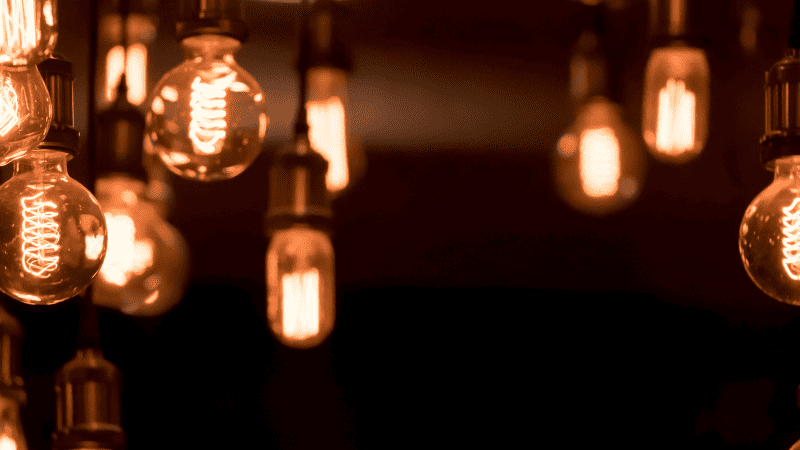
It is advisable to spread ambient lighting over less powerful lights as it reduces glare and evens out the lighting.
On the other hand, task lighting provides additional light for the work requiring more illumination. This is an ideal solution for smaller work areas, such as desks. Using task lighting of cooler colors is recommended. A typical example of these lights is table lamps.
When it comes to describing cool and warm colors, we need to understand color temperature. Without going deep into its physics, let’s discuss the things you will need to understand for installing various types of office lights.
Color temperature is expressed in kelvins. Cool colors (bluish) have a color temperature of above 5000K. Whereas, warm colors (yellowish) have a color temperature of 2700K to 3000K.
Study shows we feel relaxed and sleepy in warmer yellow colors, so such lighting is not suitable for workplaces. However, a cooler blue light makes us more productive and alert.

So, make sure to install lighting having color temperatures above 4000K for a productive environment. In general, go for cooler white and blue lights for the best working experience.
The placement of lighting matters a lot for creating a comfortable workplace environment. For computer-based offices, make sure to install lights in a way to avoid contrast and glare.
Ceiling lights are the best option if you prefer soft and diffused lights. For optimum employee focus, make sure to provide task lighting with adjustable intensity at every desk. So that employees can use them based on their level of requirements and comfort.
Installing the right lights can cut down on extra expenses. Therefore, it is advisable to go for the lights with a longer lifespan. LEDs are the best option in that scenario as we have mentioned above.
You can choose the intensity of the lights depending on the size of your workplace. For a small office area, lights of lesser lumen output work well. In contrast, spacious rooms require lights of a larger output.
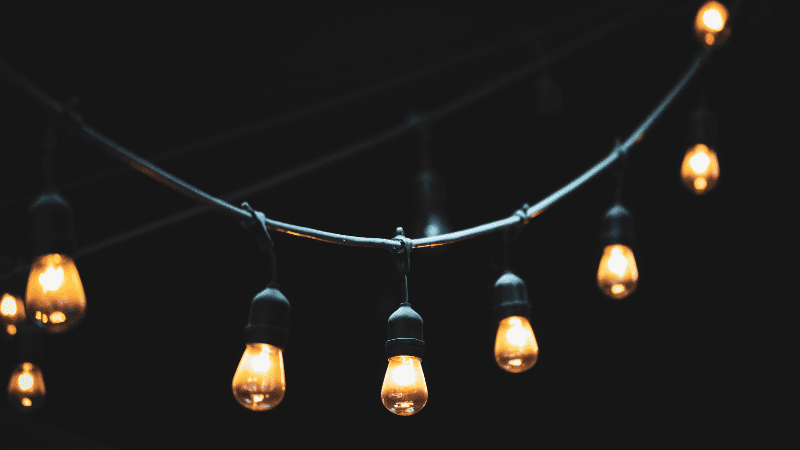
The light should be evenly spread in the workplace. It should neither be dull to cause headaches and eye strain, nor too bright to damage the eyes. In addition to ambient lighting, adjustable task lighting of cool colors must be used for focused work.
The best office lighting is natural light. However, in the case of artificial lights, illumination of 300 lux to 500 lux is most suitable. LED white lights of about 4500K color temperature are recommended for workplaces as they don’t cause eye strain.
According to the OSHA ruling, the entire workplace must be evenly illuminated. It suggests various candle-feet breakdowns depending on the type of workplace.
The recommended illumination for offices is 30 foot-candles, and for construction plants, it’s 10 foot-candles. For warehouse and underground work, it’s 5-foot-candles.
Office lighting having a color temperature of above 4000K is most suitable as it increases alertness and productivity and reduces sleepiness and relaxation.
This color range is categorized as blue light. Generally, blue and cool white lights are recommended for the office environment.
While picking the lights for your workplace, you must consider various factors, such as lighting standards and employee comfort.
Choosing the right lights can save you costs, make a good ESG profile of your company, improve employee experience, and free yourself from the hassle of changing the lights frequently.
Therefore, while purchasing lights for your workplace, make sure they are environment-friendly, come under cooler colors, have a longer lifespan, and are installed at favorable locations.
Risun is the one-stop lighting supply in China. We offer lighting solutions for professionals and wholesalers. This means you can get indoor lighting fixtures, outdoor lighting fixtures, commercial lighting fixtures, lighting bulbs, and even fans from one reliable dealer.
We have over 13 years of experience at our hands and understand the North American market inside out. Therefore, you can get customized solutions for the latest trends in the LED lighting space.
Rely on Risun for quality LED lighting solutions for your workplace. Our client-focused approach ensures you get the best lighting solutions at a faster pace, Contact us now!
Comprehensive Lighting Solutions for MRO Wholesalers and Professionals
send your inquiry
Hi, I'm the author of this post, and I have been in this field for more than 15 years. If you want to wholesale lighting fixtures or lighting related product, feel free to ask me any questions.
Learn More >>Download our catalog to view all of our lighting products.
Ready to get started ?
Send Your InquiryOur team will get back to you promptly

please
download
Get notified about new products
Our team will get back to you promptly!
Add your first comment to this post